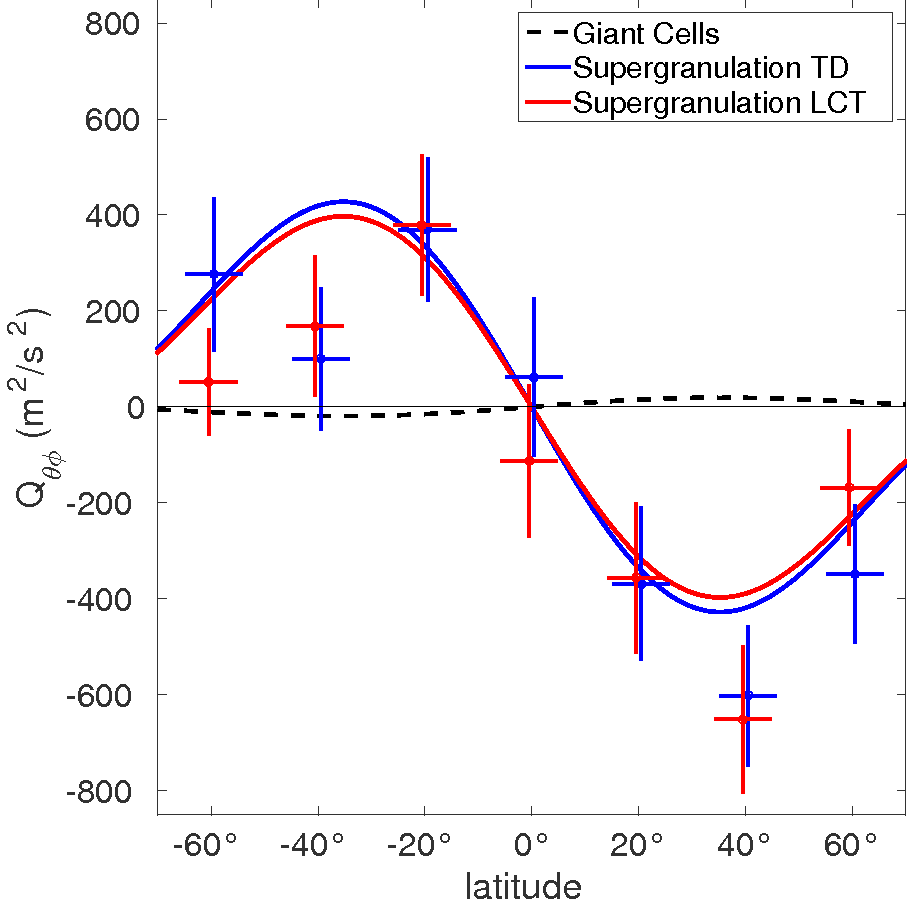|
As a full model of stellar convection is still out of reach, analysis and interpretation of seismic data are currently out best hope to understand Solar dynamo. Dopplergrams containing the line-of-sight velocity are obtained every 45 s by the Solar Dynamics Observatory (SDO). An independant measurement can be obtained by tracking granules at the Sun's surface (Local Correlation Tracking on intensity images). We measure the Reynolds stress and the two-point velocity correlations using these two techniques. All these quantities exhibit a latitudinal dependance that can be analysed using a model of rotating anisotropic turbulence. In particular, the horizontal Reynolds stress at supergranulation scale is negative in the northern hemisphere as opposed to the measurement of Hathaway et al. (2013) for giant cells. This indicates that the Reynolds stress changes sign with depth as supergranules and giant cells are enchored at different depths.
|

Horizontal Reynolds stress at the solar surface at supergranulation scale with LCT and time-distance. In black, the measurement performed by Hathaway et al. (2013) for giant cells.
|

